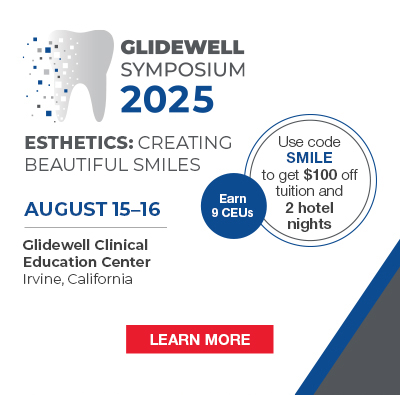 How do you serve your pregnant patients? Do you serve them at all? Do you educate them to debunk the myths surrounding pregnancy and oral health? My hope is to provide you with a few compelling reasons to be proactive in treating these patients, because dentistry is not just about teeth anymore.
How do you serve your pregnant patients? Do you serve them at all? Do you educate them to debunk the myths surrounding pregnancy and oral health? My hope is to provide you with a few compelling reasons to be proactive in treating these patients, because dentistry is not just about teeth anymore.
THE MYTHS
Let’s think about the following myths: for each pregnancy a woman loses one tooth; bleeding, swollen, and tender gums during pregnancy are normal; dental treatment during pregnancy is dangerous. What do all these myths have in common? Tooth loss and bleeding gums are a sign of disease and the need for dental treatment, other than preventive care, indicates some type of dental disease. Because the public believes these myths, periodontal disease is allowed to progress, increasing the risk of poor pregnancy outcomes. Granted, it is not prudent to do major, invasive dental treatment with heavy anesthetic during the first trimester. I am neither promoting excessive treatment nor being casual with the fragility of pregnancy. These are the very reasons I urge you to be proactive. It is our job, as dental healthcare providers, to properly identify, educate, and treat oral disease in order to reduce the risk. More importantly, we must educate our patients in prevention and be aggressive in treating gingivitis and the earliest stages of periodontal disease.
PERIODONTAL DISEASE IS AN INFECTION
Periodontal disease is an inflammatory response brought about by bacterial invasion of the periodontium. During the inflammatory response, there is a cascade of biological events that controls its progression. Cytokines and other inflammatory mediators control these events. Inflammatory mediators, which include cytokines, are molecules that control one or more aspects of the inflammatory response. Cytokines are soluble polypeptide mediators that are involved in cellular growth, function, and healing. They are signaling proteins that control local and systemic immune and inflammatory response.5
THE HYGIENIST’S ROLE
e needs it. This holds true in the world of dentistry, also. Tools are needed to determine these needs. One such tool is the patient interview. This tool should be utilized with every patient: new or existing, male or female, pregnant or not. It can be done by the dentist or any auxiliaries who are properly trained. Hygienists can train other team members in this process in order to ensure continuity of care. The interview includes questions about why the patient chose to be a part of your practice, what things he or she expects of you and the dentist, and how you are doing in meeting those expectations.
GETTING THE MESSAGE OUT
Getting the message out in your community can be accomplished in several ways. Be creative and serve your neighbors. Contact the local hospital to find out how you can contribute to the health of the community’s mothers. The obstetrics department can help guide you to the right place. Conduct a 10-minute workshop at the beginning of a Lamaze class. Print material from the ADA website (www.ada.org) and the American Academy of Periodontology website (www.perio.org) to share with the participants. Each of these websites has consumer pages with easy-to-read explanations of research findings regarding the relationship between periodontal disease and preterm labor. Contact the public health department in your county or city. They often offer free prenatal classes. The women attending often are referred by their doctors very early in their pregnancies. This is the perfect time to educate them before it is too late. This is also a great opportunity to talk about infant dental care. My experience has been that the directors of these programs are thrilled to have an expert deliver this information.
CONCLUSION
This article is intended to pique your interest in the relationship between periodontal disease and our country’s leading health concerns. I also hope it triggers thoughts about how to better serve your patients and be a true healthcare provider. My greatest desire, however, is that it will inspire you to raise your personal standard of care, the level of care you deliver to those who seek it. Every day, researchers are learning more about the mouth-body connection. It is time for those of us “in the field” to put this knowledge to practical use. Don’t compromise your standard of care because of resistance from a patient or a co-worker. Educate your patients with what you know in your heart and mind to be true, and they will know that you care and that the treatment you recommend is in their best interest. Be honest and use all the educational tools at your disposal during the clinical evaluation. Whether this is a diagram, intraoral photographs, x-rays, or a simple hand mirror, create an interactive experience for the patient, and he or she will respond with appreciation and compliance.
References
-
Chronic maternal gum disease strongly linked to premature birth. American Dental Association news release; July 19, 2001. Available at: www.ada.org/public/media. Accessed on 1/15/02.
-
Zeeman G, Veth E, Dennison D. Periodontal disease: implications for women’s health. Obstetrical Gynecological Survey. 2001;56:43-49.
-
Infant Mortality Rate 1999; National Center for Health Statistics. Available at: www.cdc.gov/nchs/fastats. Accessed on 1/15/02.
-
Jared H, Lieff S, Wilder R, et al. Periodontal disease and low birth weight: a critical link? Access. 1999;3:32-37.
-
Stites D, Terr A, Parslow T. Basic and Clinical Immunology. 8th ed. Norwalk, Conn: Appleton and Lange; 1994;:42-47,105,137-147.
-
Jeffcoat M, Geurs N, Reddy M, et al. Periodontal infection and preterm birth. J Am Dent Assoc. 2001;132:875-880.
- American Academy of Periodontology Adverse Pregnancy Outcomes. In: Annals of Periodontology. Chicago, III; December, 2001.
Recommended Reading
rt B, Malvitz D, et al. Oral health during pregnancy. J Am Dent Assoc. 2001;132:1009-1016.
Mosby’s Drug Reference. 5th ed. St Louis, Mo: Mosby, Inc; 2001.
American Academy of Periodontology. Parameter on systemic conditions affected by periodontal diseases. J Periodontol. 2000;71(Suppl):880-883.
Website of the American Academy of Periodontology. Available at: www.perio.org.
Website of the American Dental Association. Available at: www.ada.org.
Ms. Teel is a coach with Hygiene Mastery and works in a family and cosmetic dental practice in Cary, NC. She has worked in general, cosmetic, and periodontal practices and has been involved in research and teaching at the UNC School of Dentistry since 1991. She can be contacted at rachel@hygienemastery.com or (888) 347-4785.




